Mazda MX-30 review: a match for Honda and MINI?
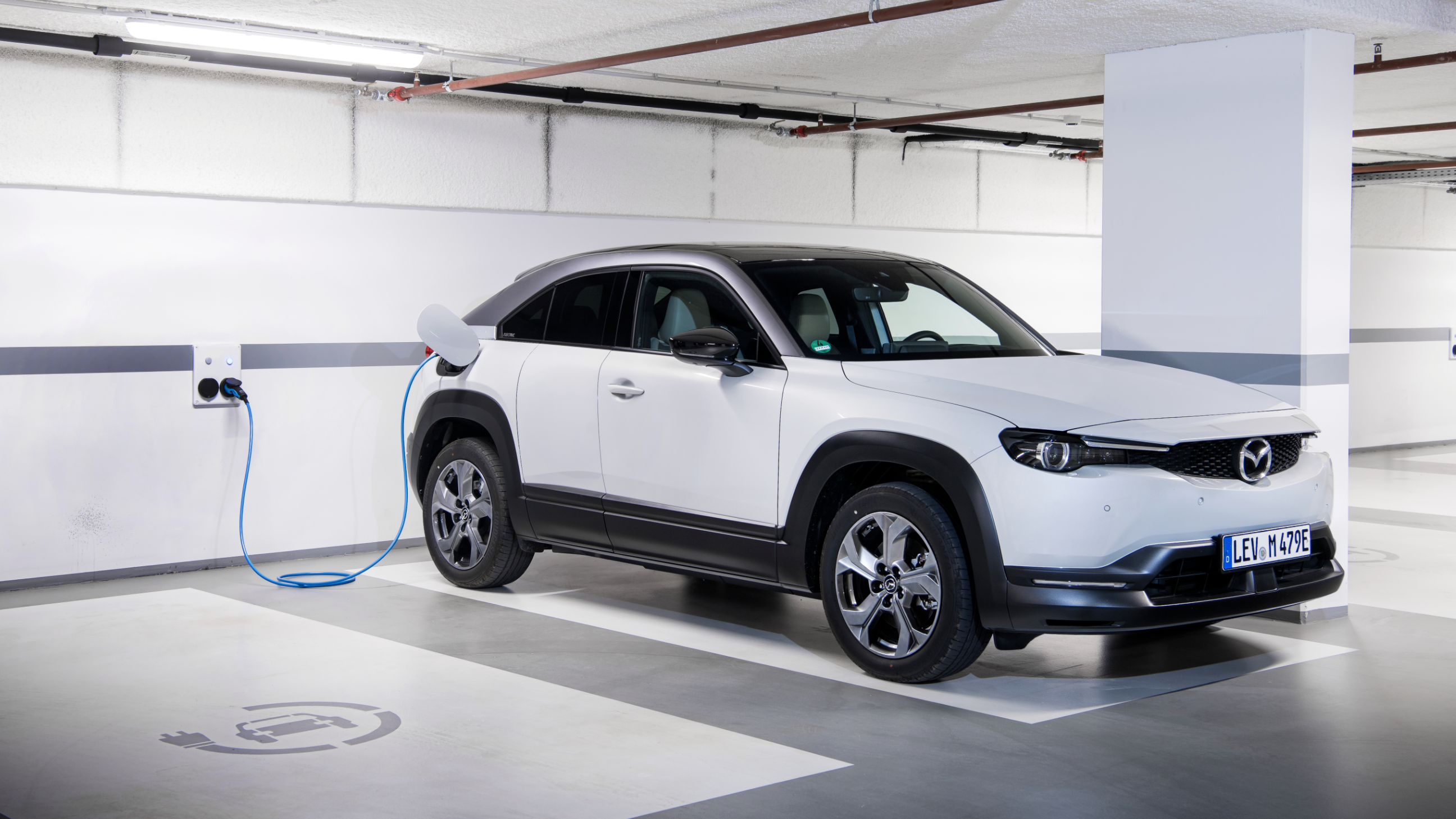
Words by Vicky Parrott
This is Mazda’s first ever pure electric car, and it takes on the Honda e and Mini Electric in the short-range, premium finish stakes. But is a 124 mile range enough in a compact SUV?
Pros: Striking interior finish, fluid drive, big boot
Cons: Poor rear passenger space, short range
Price: £25,545 - £29,845 (after £3000 gov. grant)
- Motor: Single electric motor, front-wheel drive
- Battery capacity: 35.5kWh total (usable capacity est. 32kWh)
- Max power: 143bhp
- Max torque: 271Nm
- 0 to 62mph: 9.7 seconds
- Top speed: 87mph
- Range: 124 miles (WLTP)
- Range on test: 100 miles
- Efficiency on test: 3.2 miles/kWh
- Price: £25,545 - £29,845 (after £3000 gov. grant)
electrica.live score: 6/10
The Mazda MX-30 is not an easy car to categorise. Complete with a 35.5kWh lithium-ion battery pack that delivers an official WLTP range of 124 miles, it comes in at a similar price and range to the Honda e and Mini Electric. Those rivals, however, are noticeably smaller than the Mazda, which is a similar size to the Kia Niro and Toyota C-HR and also share’s those cars’ urban SUV ambitions.
But it’s not simply a compact SUV, either. Those slimline back doors are rear hinged, so you can only open them after you’ve opened the front door, but then it reveals a pillarless entrance to the back seats. So it’s a sort-of SUV, but also a sort-of coupe. And its closest rivals on the basis of range and costs are city cars. There’s also a range-extender version coming later, which further distances the MX-30 from anything else given that the only other range extender of recent years – the BMW i3 – went off sale in 2019.
To add yet more confusion to this, what you’ll pay for a high-spec MX-30 will also get you a much more practical family car in the shape of the MG ZS EV, or more modestly equipped version of the long-range Kia Soul EV, Hyundai Kona Electric and Volkswagen ID.3 are well within reach, not to mention alternatives like the Peugeot e-208.
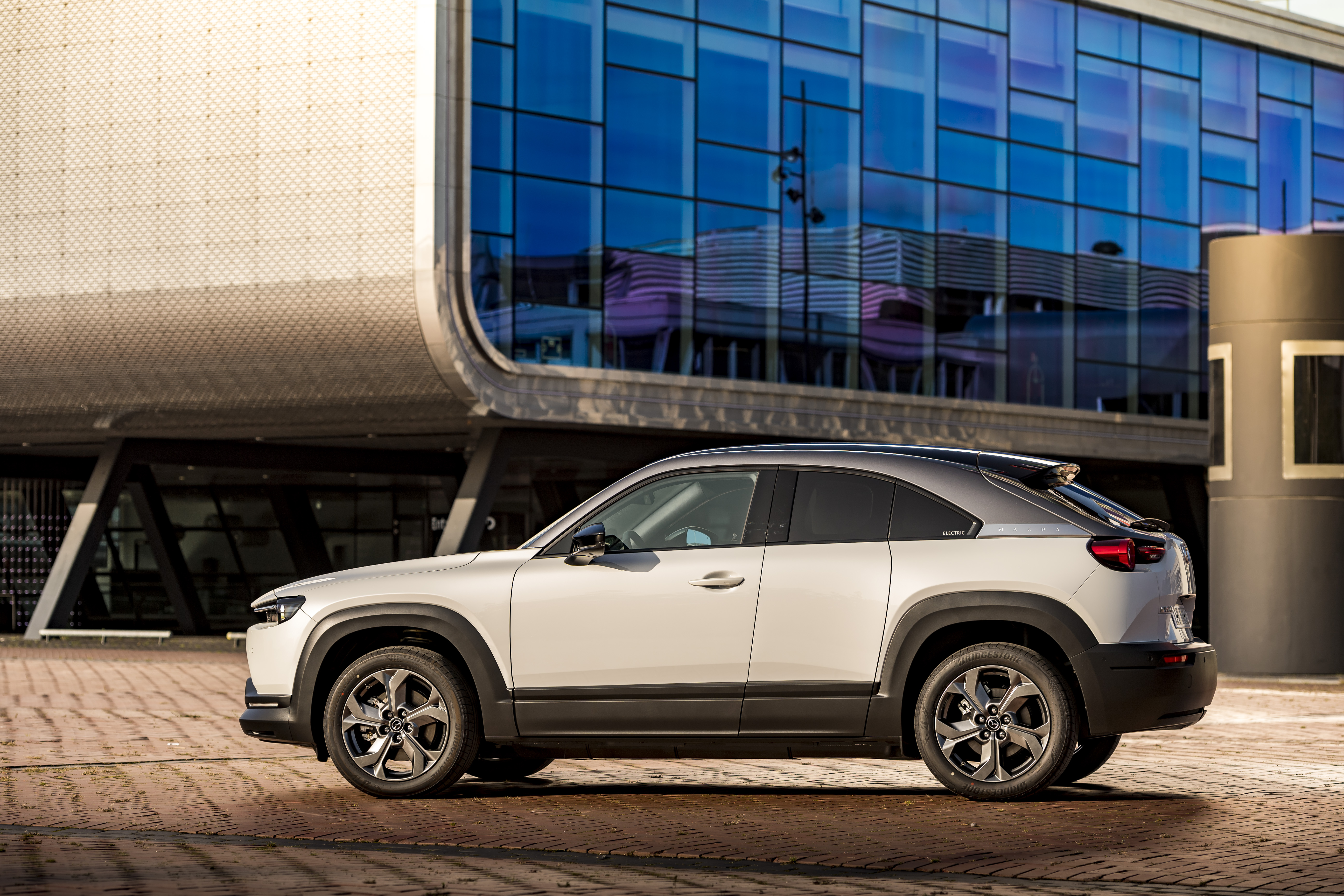
The Mazda takes an unconventional approach, then, and defies any easy label or lateral comparison. But, d’you know what? We rather like a car that’s a bit different, and the Mazda is certainly that.
Charging tops out at 50kW via the CCS charging port that is the European standard socket type, and is compatible with most public rapid charging stations. A Type 2 socket is also European standard and gives access to most of the slower charge points you tend to find in town centres and supermarket car parks, as well as to a dedicated home charger that’ll deliver a full charge in around five hours.
It looks distinctive and appropriately premium, too, the MX-30, which is exactly what Mazda wants given that the classy finish and image is exactly why you’d accept the price and range. The contrast of the metal strike at the back with its minimalist ‘electric’ statement, those intriguing, narrow rear doors… It’s not what most would call pretty, and there’s something a bit piggy about the front end, but it’s fresh, minimal and has echoes of oh-so fashionable modern retro design.
That theme carries on inside, too. Between the recycled cork trim breaking up the textiles and gloss textures around the cabin, it really does look great and feels refreshingly different. Sure, the 8.8-inch touchscreen and digital driver’s dials are far more conventional than the wall of screens that you get in the Honda e, but it’s easy to use and the fact that you get a head-up display and traffic sign recognition even in the cheapest SE-L Lux version shows the sort of equipment you can expect in the MX-30.
It’s a good driving position, too, with plenty of adjustment to the wheel and seat. Visibility to the rear is fairly poor, and some of the switchgear is a little cheap-feeling, but the touchscreen is straightforward and the main infotainment and system controls are all relatively easy to find and adjust. There’s even a rotary controller and shortcut buttons beneath the driver’s elbow that allows full use of the system without prodding the screen at all, which is arguably the easier and safer way to hop about the system when you’re driving since it removes the need to prod at precise icons on the screen.
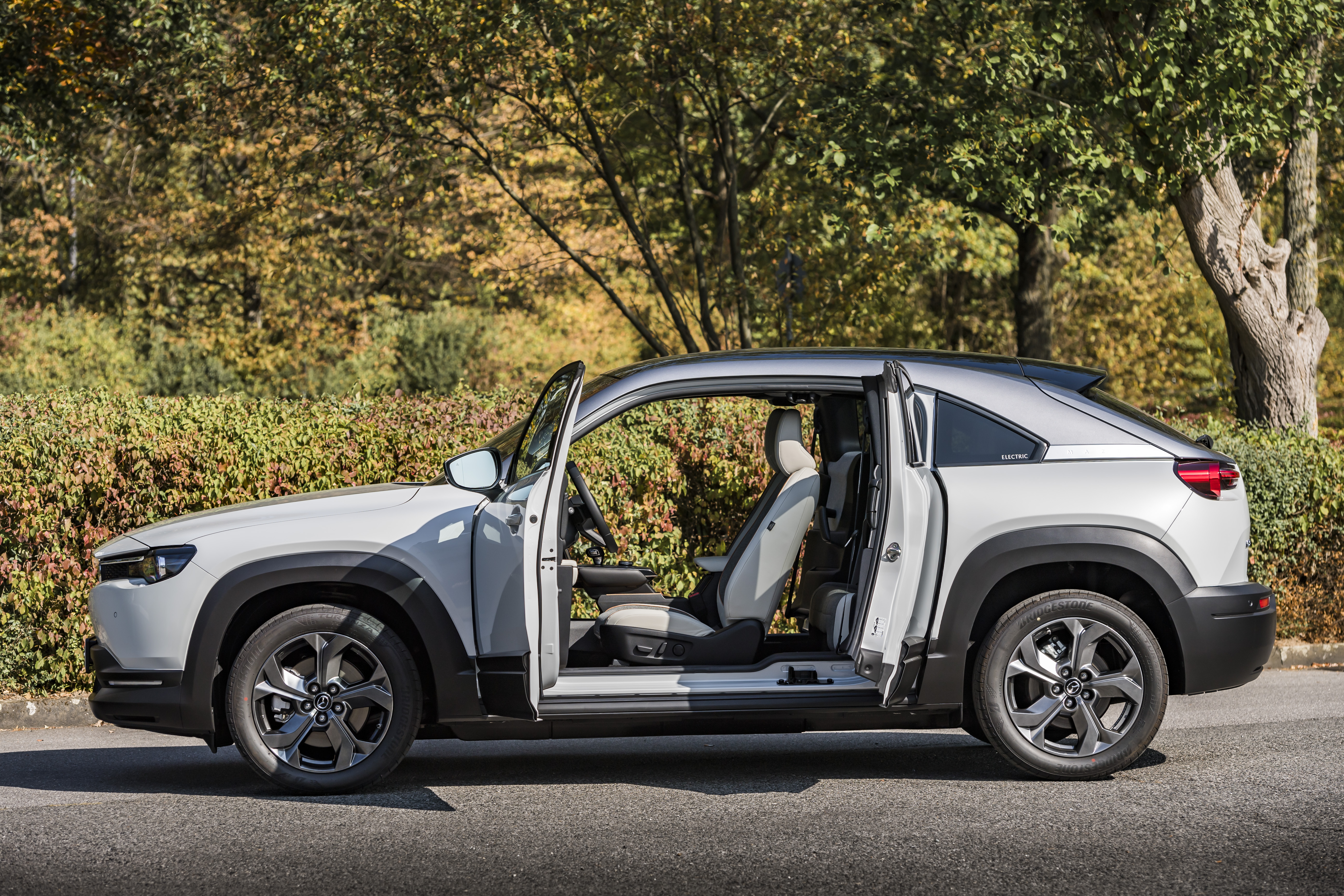
A second touchscreen beneath the dashtop mounted screen gives all your climate control cabin comfort settings, which looks snappy and in-keeping with the hi-tech feel of the MX-30 even if straightforward, old-fashioned buttons would probably be simpler to use.
Certainly, the intriguing Mazda manages to be interesting, classy and comfortable for those up front. The same can’t really be said for those in the back. Yes, those rear doors make it easier to step into the back than in a three-door hatchback, but it’s not as easy as in a straightforward five-door car since you risk tripping over the seatbelt if it’s not slipped out of the way, and the space behind the front seats feels narrow as you slide in.
"Yes, it’s better than a Honda e or Mini Electric, but it does seem that Mazda’s managed something of a reverse-Tardis with the MX-30, making it look quite big on the outside yet feel quite small on the inside."
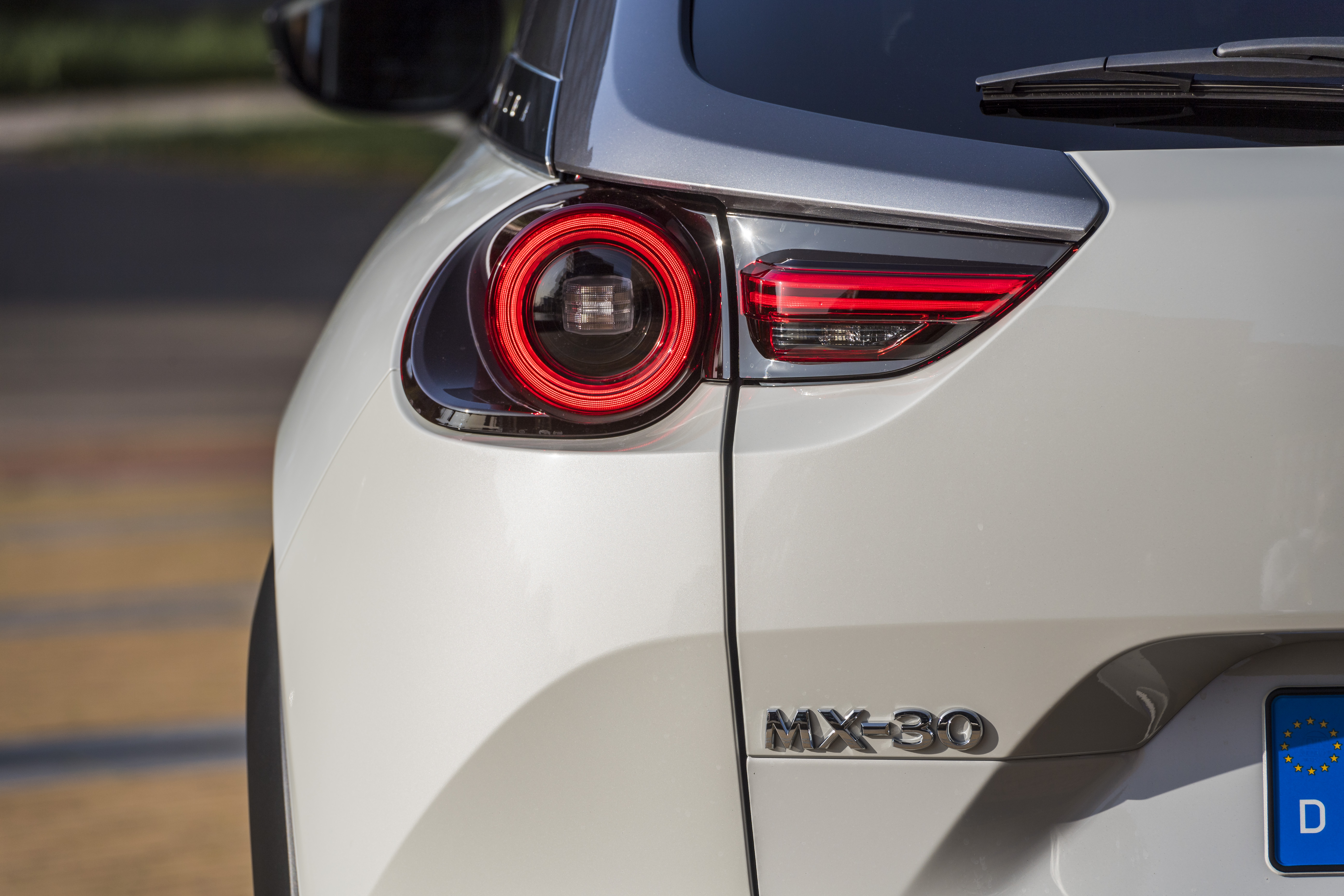
Once you are installed, there’s room for a couple of average-sized adults to sit in relative comfort, but for a car of this size you’d expect more room. It’s nowhere near as spacious as the back seats in any of those family cars we’ve already mentioned, and for some context is more what you’d expect from something the size of a VW Polo. Yes, it’s better than a Honda e or Mini Electric, but it does seem that Mazda’s managed something of a reverse-Tardis with the MX-30, making it look quite big on the outside yet feel quite small on the inside.
While we love the look and novelty of the rear-hinged doors, it is also true that they are impractical in reality. You need a lot of space to open it fully for the best access, which you likely won’t have in a busy car park, and even it’s too easy to find yourself trapped between the front and rear doors if you are hemmed in by cars on either side.
Still, the 366-litre boot isn’t a bad size at all. It’s close to what you get in the VW ID.3, with a wide boot floor that’ll easily take a bulky buggy, a jumble of sports gear or a lanky dog. The rear seats might be less than great for family motoring, but the boot is absolutely fine (you can drop the rear seats, too) and puts the boot space in the Honda or Mini to shame.
"It’s a much softer car than the Mini Electric, and even the Honda e, both of which feel more urgent in general, even if the Mazda has a pleasing balance and bite to its handling."
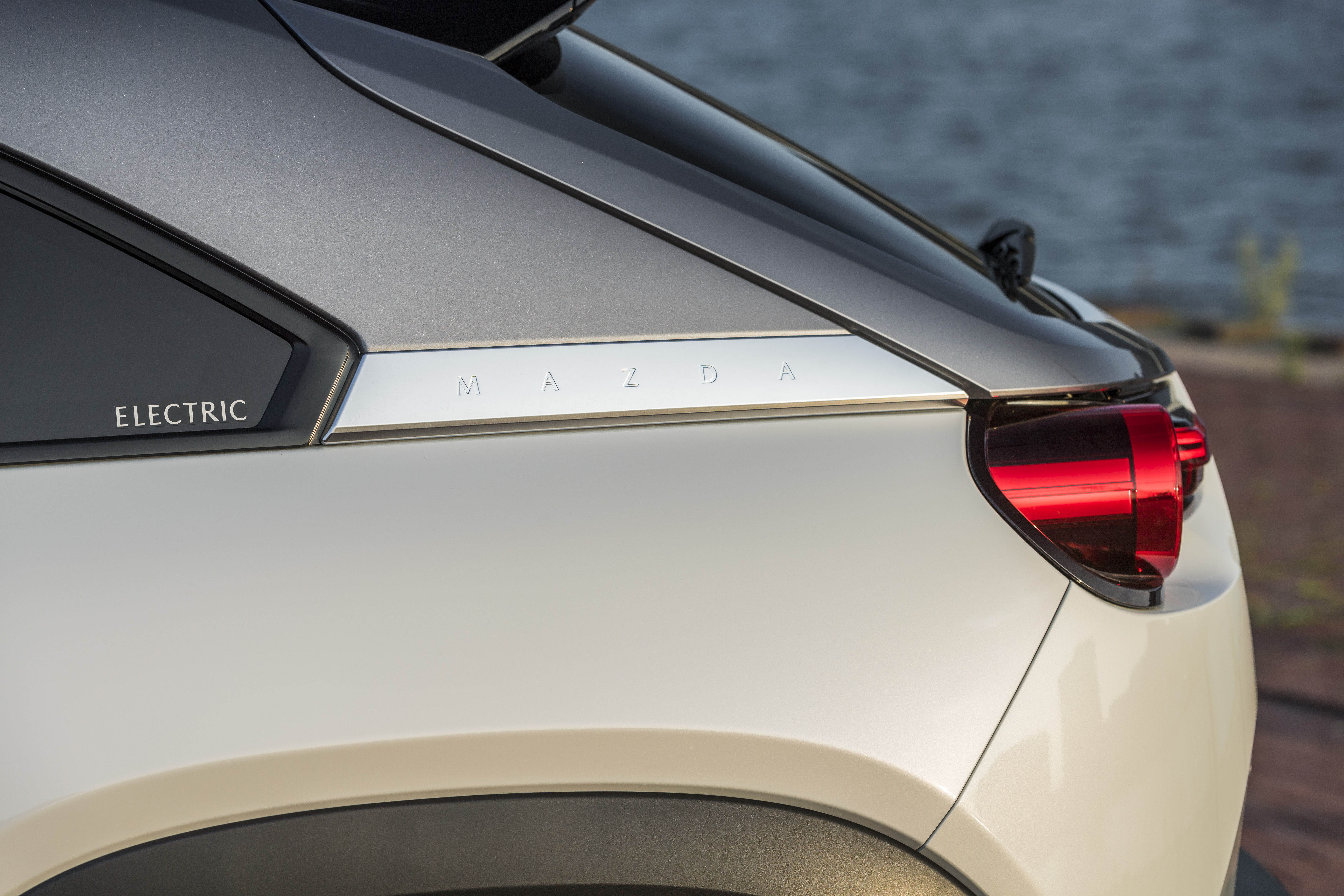
And how does it drive? Very nicely. It’s a much softer car than the Mini Electric, and even the Honda e, both of which feel more urgent in general, even if the Mazda has a pleasing balance and bite to its handling. A tighter turning circle would be very welcome – the 10.8m turning circle is nothing exceptional for a car that’s sure to be a suburban school-run specialist. Even so, the Mazda tucks into corners neatly, feels very intuitive to drive and also rides comfortably over most road surfaces.
It’s a little lumpy over bigger bumps, with a fair amount of body movement emphasising things, but there’s still a pleasant fluidity to the way the MX-30 goes down the road. The brake regen’ system, too, is unobtrusive. There are three levels, which you toggle through via the paddles on the steering wheel, making it really easy to vary the regen’ as you wish. Even the heaviest mode isn’t one pedal driving as you get in the Nissan Leaf, but it’s strong enough that you’ll need to give yourself time to get used to it if you’ve not experienced regenerative braking in an EV before.
It’s a little disappointing that the MX-30 isn’t quicker. It feels nippy enough at urban speeds, but it also feels rather strained compared to the urgent low-down acceleration that you get in most alternatives.
Even so, it’s got similar performance to many petrol alternatives and it’s confident once you’re up to cruising speeds. Provided you had the range, you’d enjoy a motorway trip in the stable, sure-footed MX-30.
Talking of range, our time with the car suggested that you should expect around 100 miles in varied driving and middling temperatures. Icy conditions and/or solid motorway miles will reduce any electric car’s range, so expect the Mazda to do more like 70 miles to a charge as a worst case scenario. Summer conditions, and more time spent in town or on free-flowing suburban roads will likely see you get close to the claimed range.
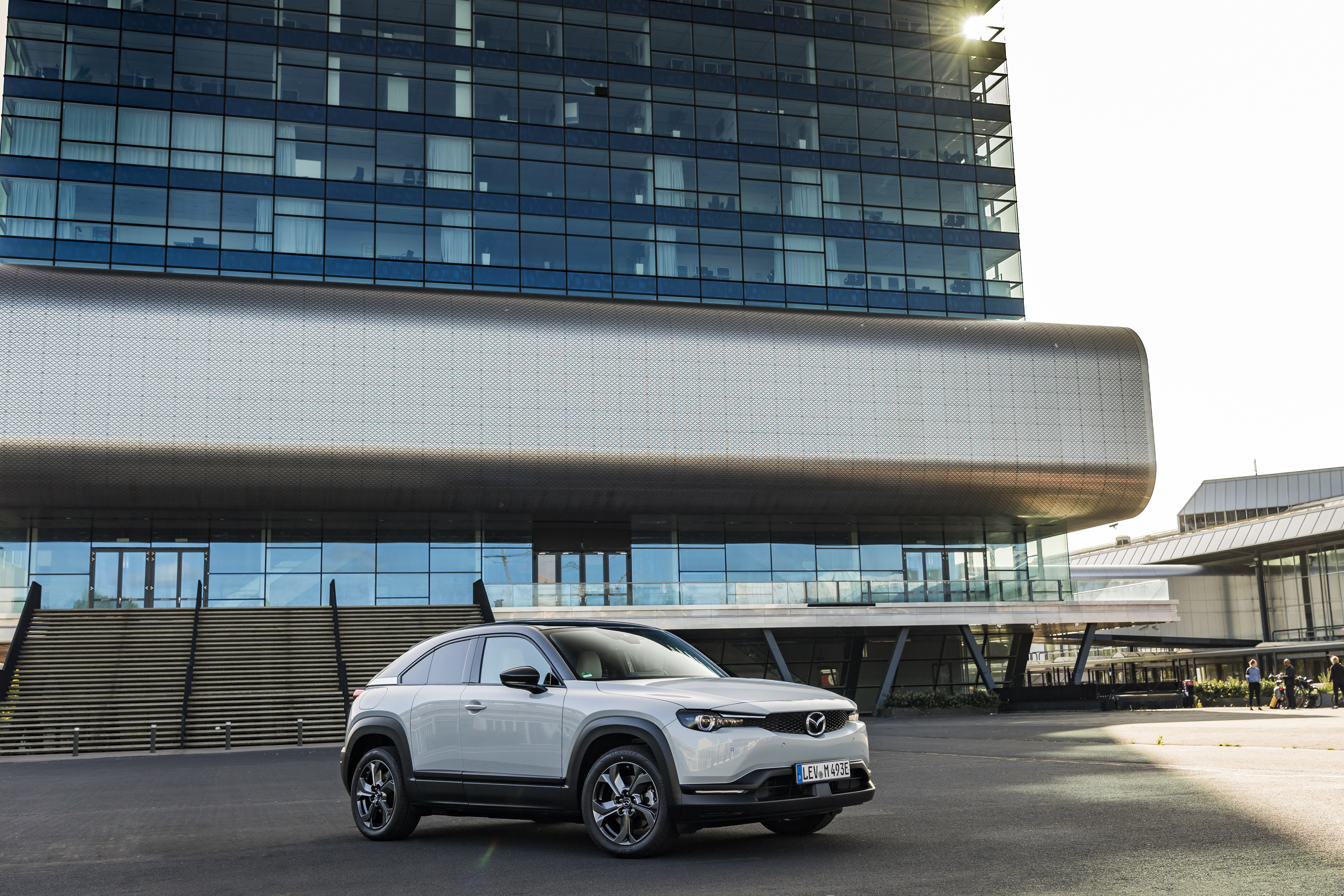
Ultimately, if you’re expecting to do long distance journeys regularly, the MX-30 is not a good option. If you are considering something like the Honda e, but could use more boot space, the Mazda could make a lot of sense.
As ever it does come down to what suits your lifestyle and budget, but ultimately the Mazda’s remit does feel rather too specific for its own good. Sure, as a more versatile alternative to those heartily cool urban cars it can makes sense, but with so many other EVs offering more range and more practicality for very similar money (step forward the Peugeot e-208, Renault ZOE and more)? Well, the Mazda is very easy to like and yet very hard to justify.